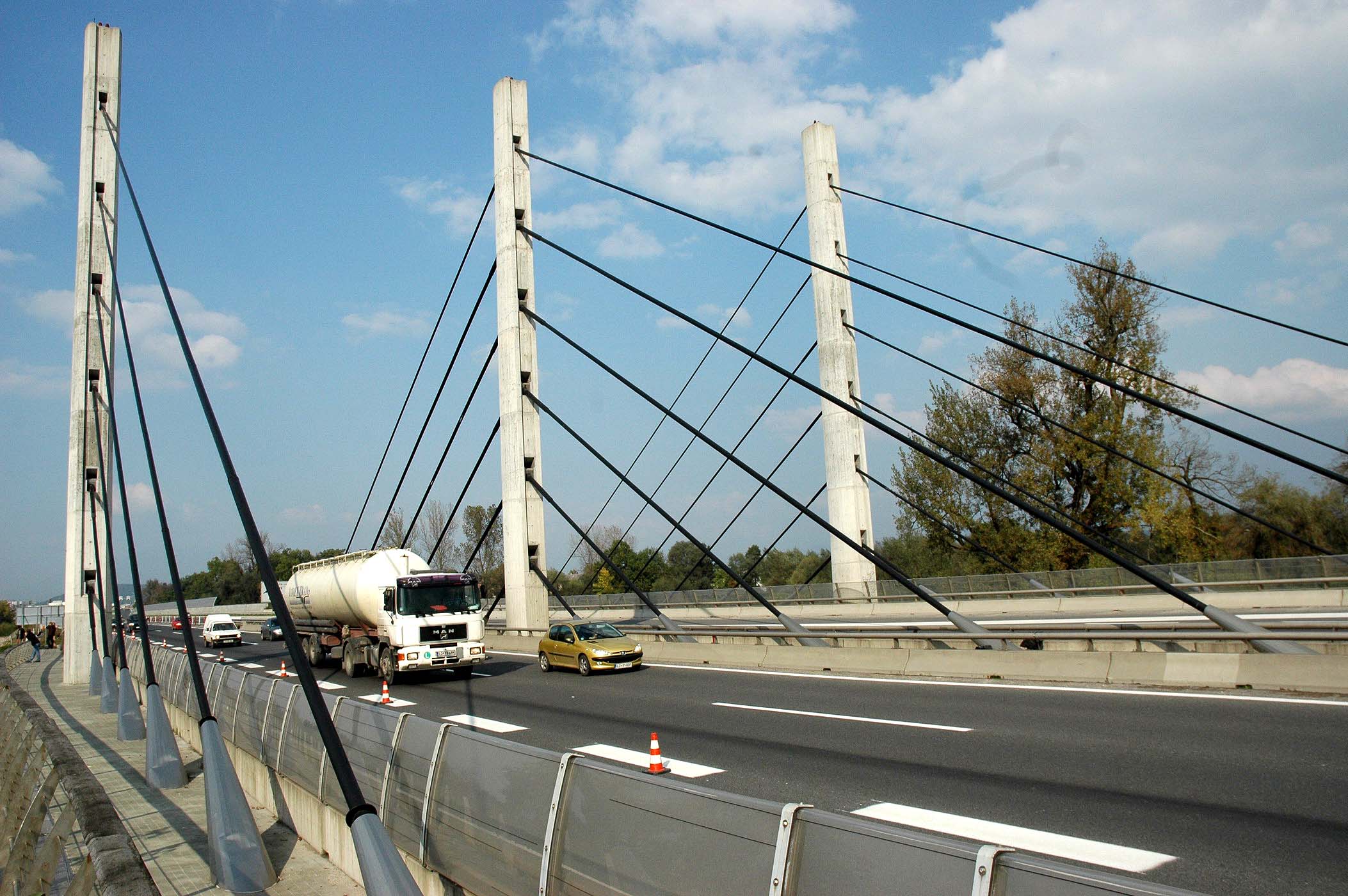Roads
Sustainable construction needs to be in accordance with the long-term preservation of the environment for humans and other living beings, both today and in the future. Activities that lead to sustainability include the construction as well as maintenance of high quality roads which will be able to cope with both increased traffic loads and climate change. On the other hand, it is necessary to perform such construction works in such a way that the least possible damage is caused to the environment. By monitoring road conditions and applying appropriate maintenance measures the impact of transport on the environment can be reduced. Before construction or maintenance works can be performed, appropriate subsoil investigations have to be carried out, as well as making sure that material to be installed is of sufficiently high quality. Only in this way will roads be durable and stable, with the minimal amount of maintenance works. Sustainable thinking clearly includes the reuse and recycling of industrial and construction waste. ZAG’s activities in this field are therefore the following:
- geological and geomechanical subsoil investigations,
- performance of special subsoil investigative tests (the cyclic triaxial test),
- third party quality control of materials for the construction of pavements and sub-base structures,
- third party quality control of materials for the construction of pavements and sub-base structures,
- organization of test fields constructed with recycled materials,
- organization of test fields constructed with recycled materials,
- measurements of the skid resistance and macro-texture of pavement surfaces,
- measurements of the unevenness of pavement surfaces (in both the longitudinal and transverse direction),
- third party quality control and monitoring of geotechnical anchors,
- measurements of the vibrations of buildings and engineering structures,
- noise protection.

References
ROSANNE ‘ROlling resistance, Skid resistance, ANd Noise Emission measurement standards for road surfaces
FP7 2013 – 2016
—
PERSUADE ‘PoroElastic Road SUrface: an innovation to Avoid Damages to the Environment
FP7 2009 – 2015
—
DIRECT-MAT, DIsmantling and RECycling Techniques for road MATerials – sharing knowledge and practices
FP7 2008 – 2011
—
TYROSAFE ‘TYre and Road surface Optimisation for Skid resistance And Further Effects’
FP7 2008 – 2010
—
SPENS ‘Sustainable Pavements for European New member Statesre’ (koordinator projekta)
FP6 2006 – 2009
—
FORMAT ‘Fully Optimised Road MainTenance’
FP6 2002 – 2005
—
MIRAVEC ‘Modelling Infrastructure influence on RoAd Vehicle Energy Consumption’
CEDR 2011 – 2013
—
EVITA ‘EnVironmental Indicators for the Total road infrastructure Assets’
CEDR 2010 – 2012
—
P2R2C2 ‘Pavement Performance Remediation Requirements following Climate Change’
CEDR 2008 – 2010
—
The influence of the content and basic characteristics of fine particles in unbound layers on the freeze/thaw resistance of unbound and bound layers in pavement structures
DRSC 2010 – 2012
—
The influence of asphalt mixes on tyre-road noise emissions
DRSC 2003
—
Seasonal effects of changing humidity and temperatures in unbound layers on the bearing capacity and deformability of pavement structures
DRSC 2000 – 2003
—
The effect of unevenness on the degree of damage to road structures and vehicles
DRSC 1999 – 2002
—
The effect of ground settlement of the transition zone between bridge structures and road pavements on the longitudinal road profile
DARS 2006 – 2008
—
Guidelines for the performance of geotechnical monitoring
DARS 2006 – 2007
—
Third party quality control of Slovenia’s motorway construction program
DARS 1996 – 2009
—
COST 354 ‘Performance Indicators for Road Pavements’
ESF 2004 – 2008
—
COST 350 ‘Integrated assessment of environmental impact of traffic and transport infrastructure’
EC 2002 – 2006
—
COST 348 ‘Reinforcement of pavements with steel meshes and geosynthetics’
REIPAS EC 2002 – 2006
—
COST 345 ‘Procedures Required for Assessing Highway Structures’
EC 1999 – 2002
Geotechnics:
Assist. Prof. Karmen Fifer Bizjak, PhD (Geol.)
Frictional properties and unevenness:
Darko Kokot, MSc (Civ. Eng.)
Noise:
Rok Rudolf, BSc (Phys.)
Vibrations:
Asist. Prof. Dr. Aleš Žnidarič (Civ. Eng.)
Ground anchors:
Iztok Klemenc, PhD (Civ. Eng.)
Asphalt and bitumen characteristics:
Lidija Ržek, PhD (Civ. Eng.)
Marjan Tušar, PhD (Dipl.Chem.)

